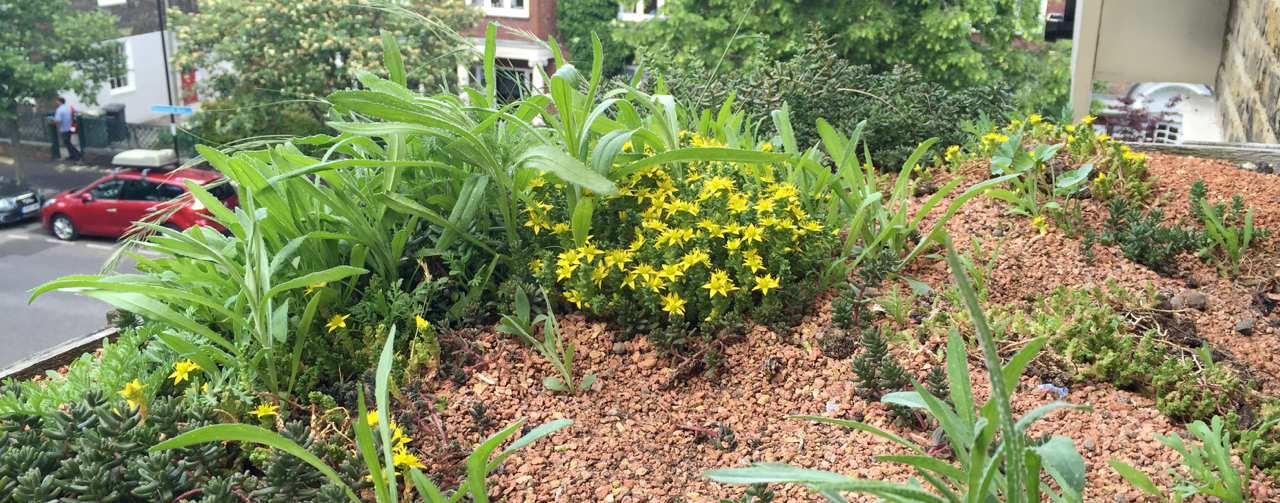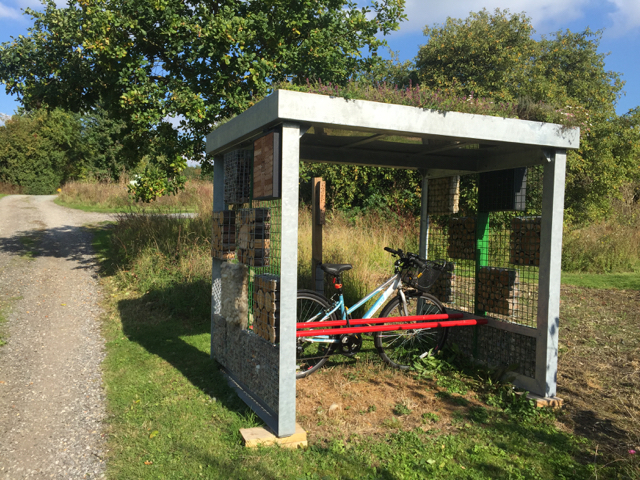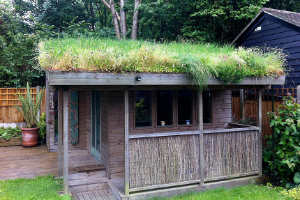Although this may seem obvious but we know of cases where people thought they could cut corners in this area and unfortunately suffered water leaks within a very short time.
Don’t scrimp on the waterproofing layer
Sadly, it currently seems impossible to avoid using a petroleum based product for a green roof waterproofing layer. If we could we would recommend one but to date we have no knowledge of any that is available. In waterproofing terms EDPM’s are generally considered the most environmentally friendly.
Our experience over the years is that a lightweight pondliner is sufficient for a small scale green roof. The Walter Segal method of waterproofing for self-build uses a pond-liner material. This is the method John used on his first green roof on his own house.
Jon Broome, who has built a number of houses using this method, including on his own house Shaw’s Cottage, where our good friend and colleague Gary Grant designed the roof.
The advantages of a pond liner for small scale builds are:
- The pipe sleeve [outlet sleeve] for internal drainage can be supplied pre welded to your liner in the position you specify, saving work and detailing for the builder.
- Another advantage is also that the complete liner can be fabricated off site and delivered in one piece. This means no specialist onsite work. The waterproofing is simple rolled out and ready to go.
- A good pond liner has a very long life even when exposed to UV, meaning it will last even longer beneath a green roof.
- It is light and flexible.
The disadvantage is:
- Pondliner is not as puncture resistant as other membranes therefore CARE is needed.
You can always go for a superior waterproofing layer and get this installed by an approved contractor. EPDM Single-Ply Membrane is the standard alternative.
In the case of installing EPDM, you might seek to use an approved contractor. However you may have to argue that the only element you want to purchase from the supplier is the geotextile protection layer and not be swayed by any insistence that you also purchase their substrates and drainage layers in order to meet their guarantee criteria.

Learn how vital a good waterproofing layer is!



